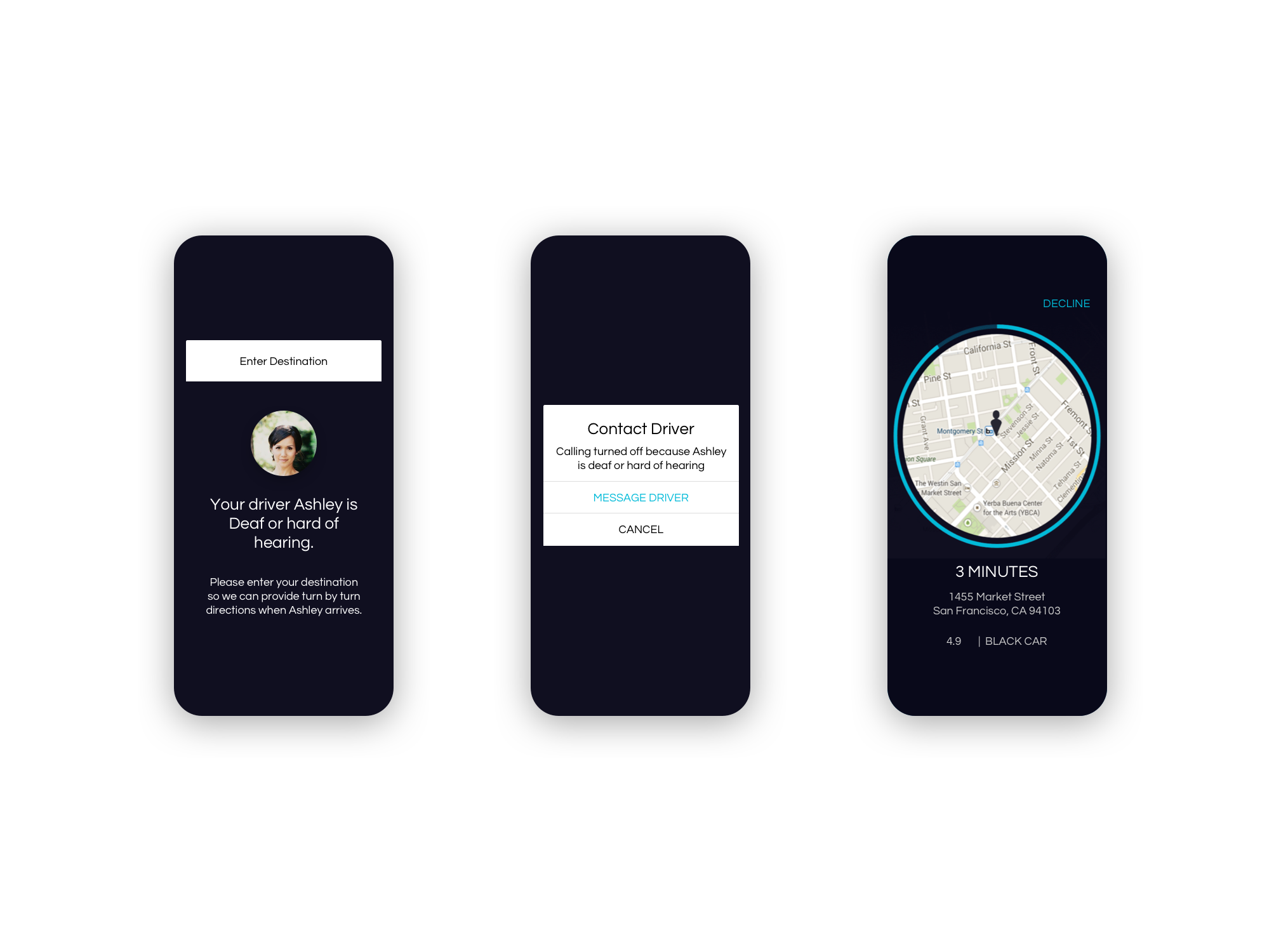
Accessible by Design
Unemployment amongst Deaf Americans hovers around 70% in the USA. In 2015, Mark collaborated to design a suite of accessibility features to help attract more deaf people to drive with Uber.

Task
Every second someplace in the world an Uber pulls up to a passenger who says their name to the driver, confirming there identify. But what happens if the driver is Deaf and hard of hearing?
Mark engaged with Deaf partners directly, asking what improvements they’d like to see. They had a lot to say.

Action
Mark led the product design and launch of accessibility features in the ridesharing experience. In order to reduce friction during communication, the team focused on three key moments in the ridesharing experience.
The team created a prompt explaining to passengers that their driver was deaf and that entering the destination will give their driver directions, an innovation that didn’t exist before.
Deaf drivers are unable to converse over the phone. To ensure positive communication they removed calling so that passengers would text drivers instead.
When a passenger request comes in, the driver is notified with a flashing screen to alert the driver. Before the introduction of this feature, notifications relied on sound, easily missed by deaf drivers.

At the time Uber didn’t have a product marketing team so Mark directed and produced the video and awareness strategy. The video used in the launch of the product has become a benchmark for Uber’s marketing team as one of the most viral videos on Facebook.

The story continues
Two years later, the team noticed people on Twitter using the hashtag #DeafUberDriver every day, wanting to speak to Deaf drivers. Mark collaborated with his friends on the marketing team to teach passengers American Sign Language.


Results
In 2015, Uber needed a policy narrative that delivered on the promise that Uber made cities better. Improving the unemployment rate among one of the most underserved communities in America became the goal.
The objective was to attract forty thousand deaf adults to sign up to drive with Uber, six months after launch. In the end, the team totaled thirty-three thousand deaf drivers active on Uber’s platform. One of the main reasons this project was such a success was because of the product launch awareness campaign.

Key Takeaway
“Build products in service to the story.” Mark advises.
This requires thoughtfulness of the narrative throughout the development lifecycle in order to highlight real human needs, authenticity. In the end, Mark shared his advice on building great products with a customer-centric mindset. “Prioritizing features with customers is a great way to gain their trust. I’m always delighted to see customers who weren’t directly involved in product development, share the product with their friends.”